This winter walk took a route along part of the the Wanney line, Rothley Lake, Crag and Mill.
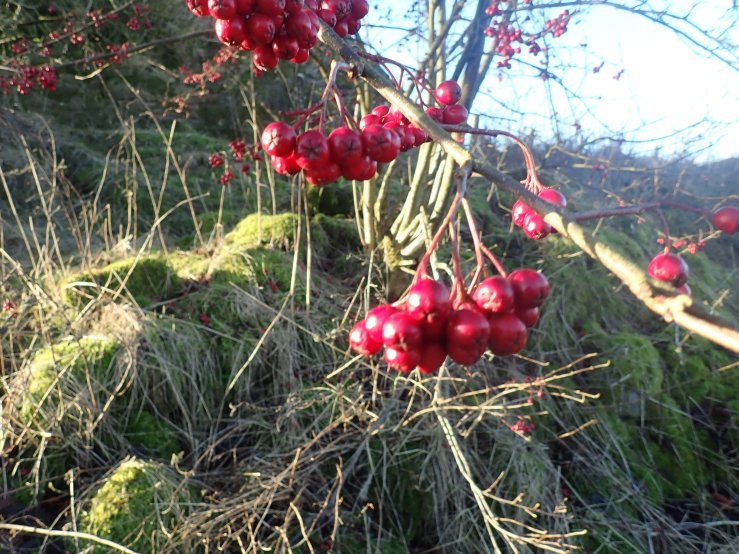
Without leaves it was difficult to identify this tree from it’s shining berries but the fallen leaves looked like cotoneaster so probably it was Hedge cotoneaster (Cotoneaster lucidus.) A flock of Fieldfare were seen nearby so the berries might be as attractive to them as to us.
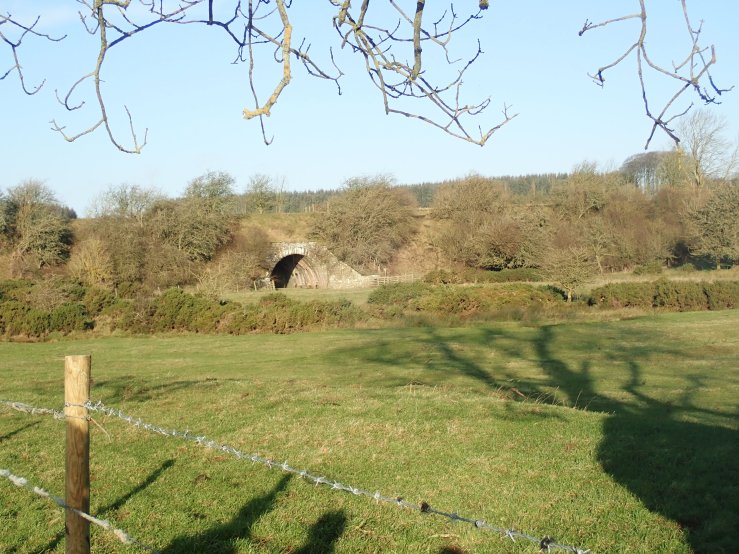
The path took us along the Wanney or Wannie line named after the river Wansbeck. Originally thirteen miles long, starting from Morpeth, it reached Rothbury in 1870 after seven years in construction. It was used to carry coal, stone, livestock, lime and passengers before its closure to passengers in 1952 and freight in 1963. Sir Walter Trevelyan, owner of Wallington (1846-1879) was the driving force behind the building of the railway. The revenue that came to the estate was spent on his house and improving the estate.
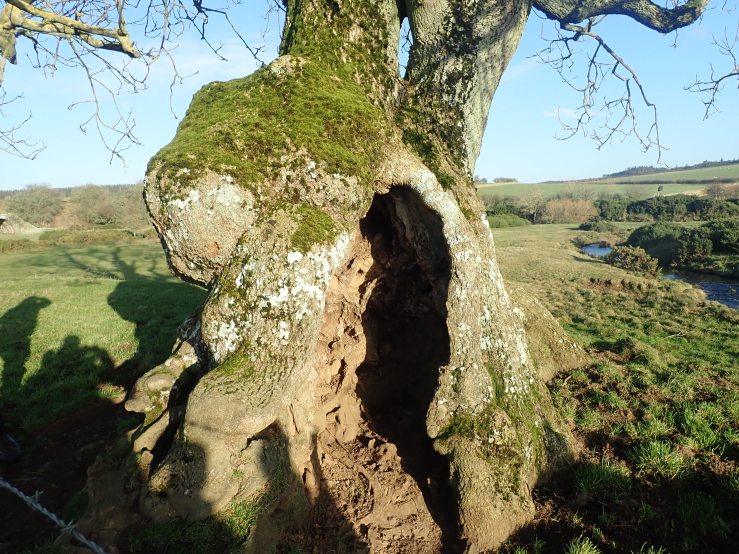
On the way we sought out this venerable hollowed ancient ash tree. Ash trees can live for 400 years or more if they have been coppiced or pollarded. The hollow structure actually helps them survive longer.
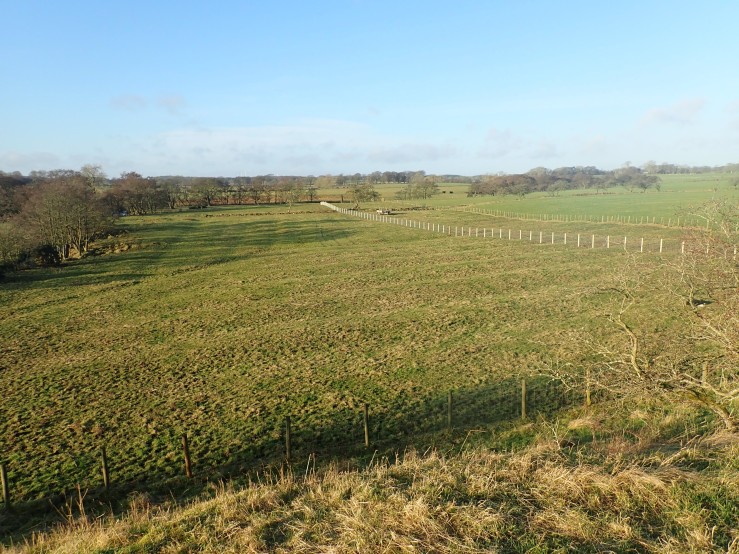
Evidence of ridge and furrow cultivation in the photo above, typical of the open field system in the middle ages when non reversible ploughs were used. It survives on higher ground where arable fields were converted to sheep walk in the 15th Century and not ploughed since.
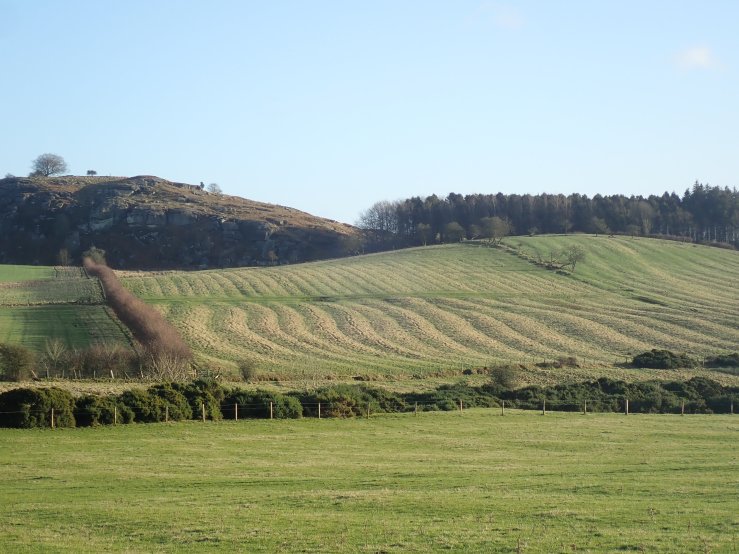
The characteristic S shaped pattern of ridges ploughed by oxen is shown in comparison to the straight rig and furrow. Oxen were yoked in larger teams than horses and since they ploughed in a clockwise direction needed more turning room. In the background, Rothley Crags shows its windy exposures by the lack of vegetation unlike the plantation below.
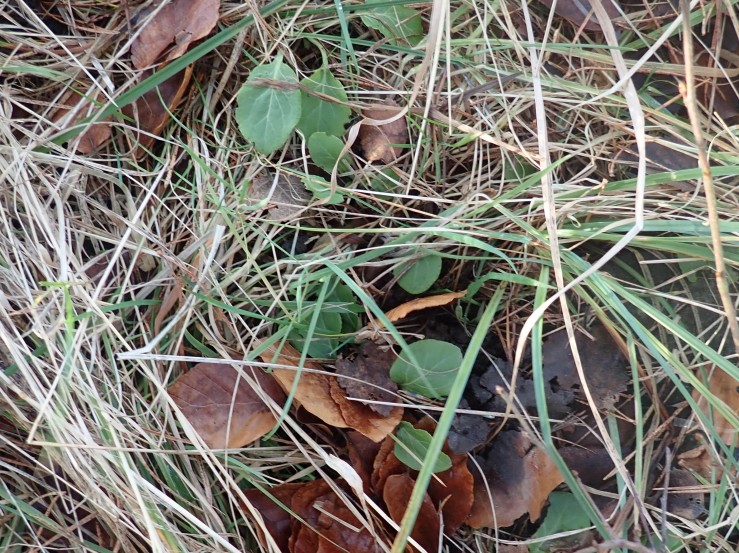
These interestingly shaped leaves belong to Intermediate wintergreen (Pyrola media).
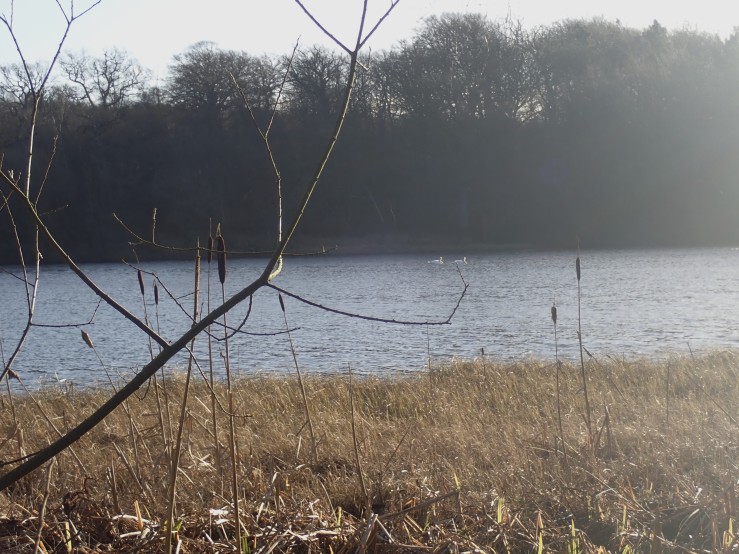
The lake forms part of the deer-park created by Sir William Calverley-Blackett (2nd Baronet) the owner of Wallington Estate who built Rothley Castle as a folly and the Codger Fort to prove loyalty to King George II during the Jacobite rebellion. The lake was landscaped by Capability Brown. The bird feeders by the lake hide were thronged by tits: Blue, Great, Coal and a pair of delightful Marsh tits. Nuthatch and chaffinch also visited while a Crossbill was heard in the trees.
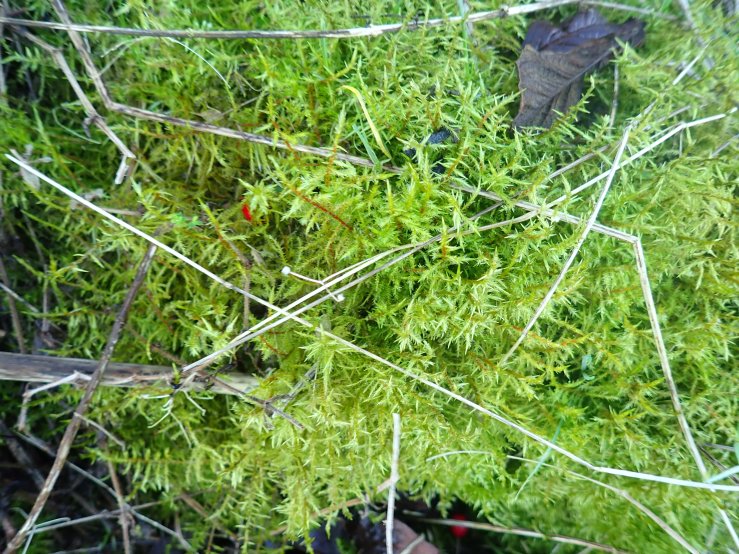
The lake surroundings have been planted with Scots Pine, Sitka spruce and Beech but moss thrived among old stumps as did Caluna vulgaris and Bilberry. Given the red stems, this moss is Red-stemmed feather moss (Pleurosium schreberi) an inhabitant of open heathy woodland.
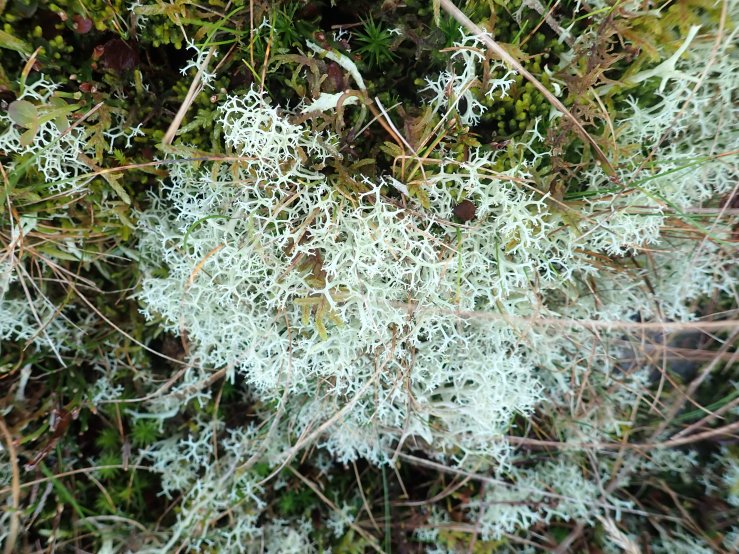 Lichens survive in exposed moorland conditions of Rothley Crag. The lichen above is Cladonia portentosa, perhaps not as widespread as it should be in these conditions. Parmelia omphalodes, below, commonly seen on exposed base-poor rocks such as the Rothley grits.
Lichens survive in exposed moorland conditions of Rothley Crag. The lichen above is Cladonia portentosa, perhaps not as widespread as it should be in these conditions. Parmelia omphalodes, below, commonly seen on exposed base-poor rocks such as the Rothley grits.
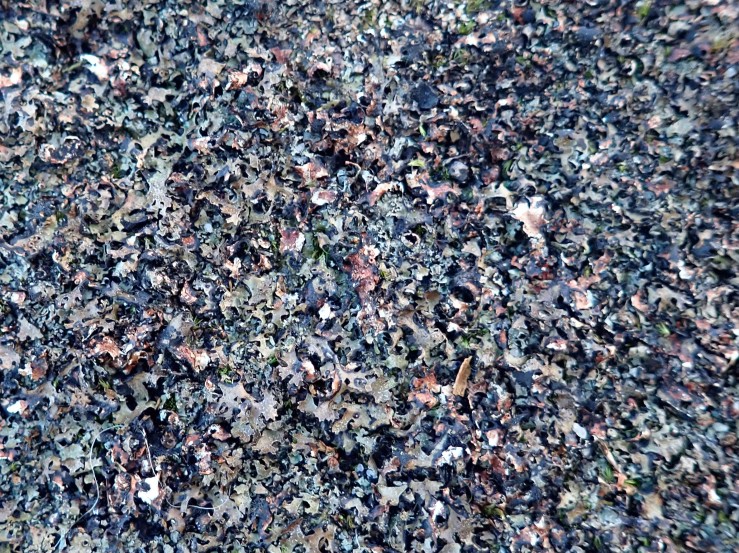
Sphaerophorus globosus is a bushy attractive lichen apparently fairly common in upland areas.
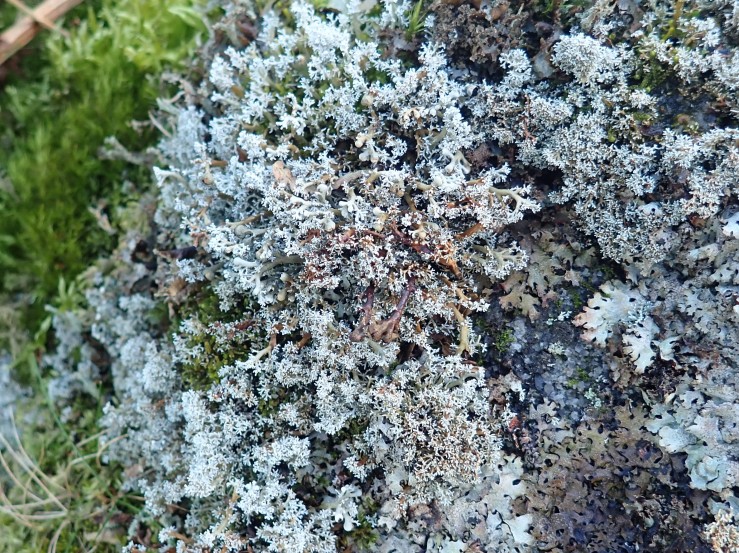
Sphaerophorus fragilis, however, forms more compact cushions, lacks the pinkish tinge and usually grows at greater altitude.
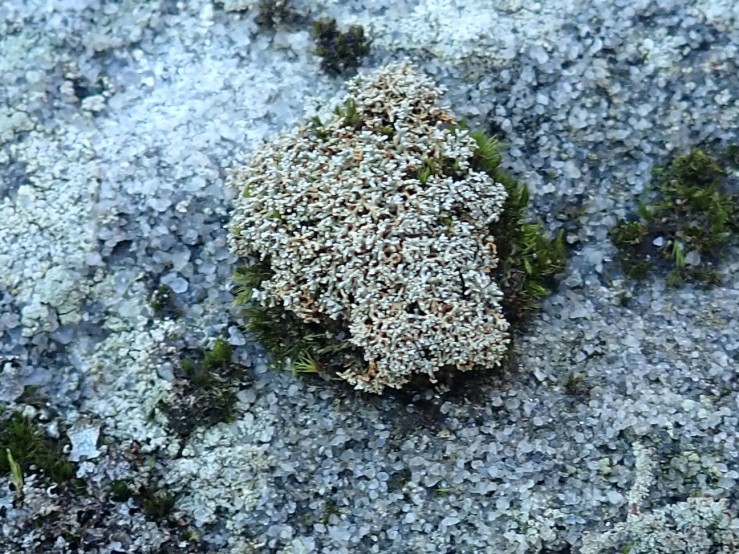
All we saw of Rothley mill was this attractive trough. The mill was a water-powered cornmill on the Hartburn, now a private dwelling, interesting in legend as the dwelling place of Queen Mab and her fairies. A dipper was seen on the Hartburn and a yellowhammer on the trees nearby.
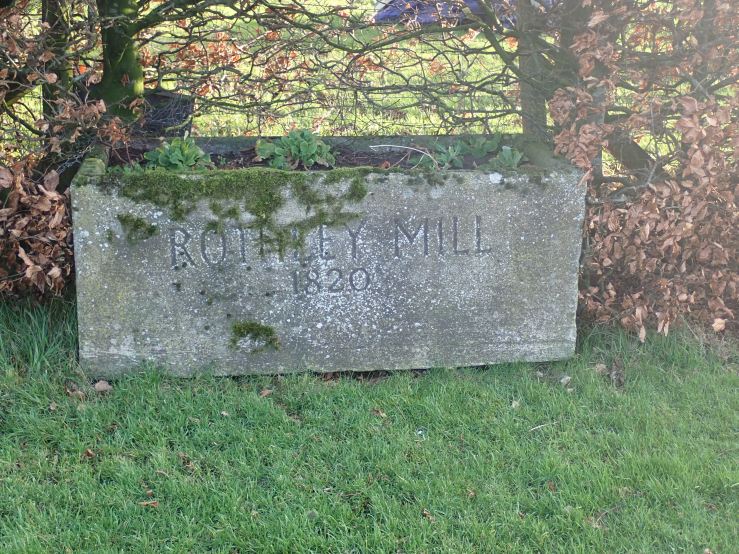
Reference:
Lichens – Frank S. Dobson
Collins Wild Flower Guide- David Streeter at al.